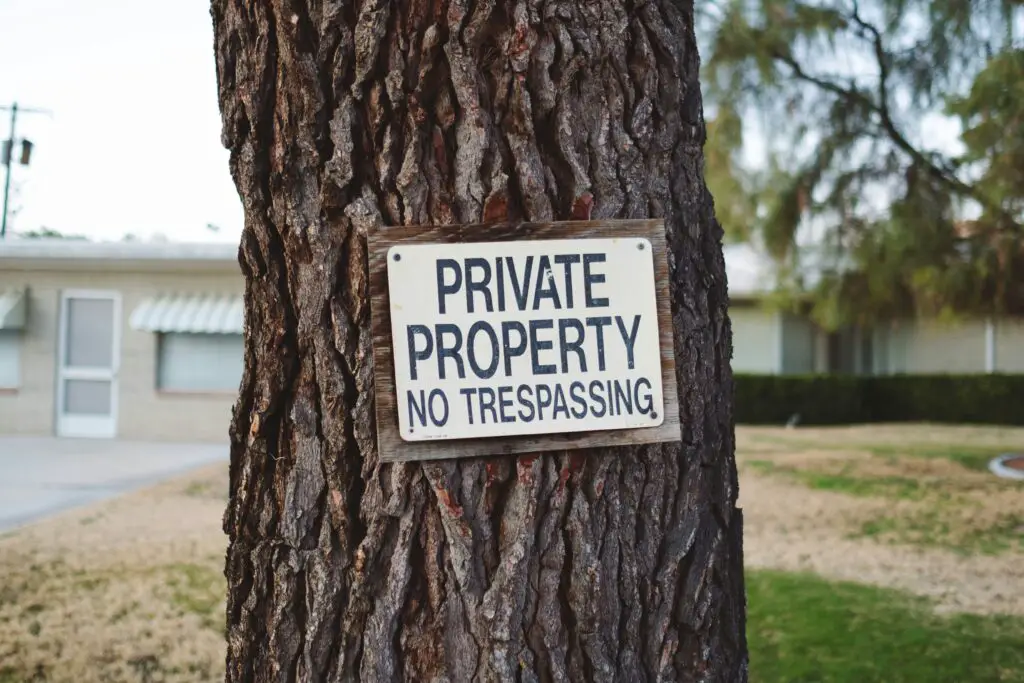Related Posts
When it comes to their homes, people can be highly protective and private. Having someone illegally make their way onto your property can be extremely stressful and confusing. In many situations, you may not even know how to handle the situation correctly and safely. Things can become incredibly confusing when property destruction and trespassing go hand-in-hand.
In this viral clip, the president of a homeowner’s association has an explosive reaction to kids supposedly trespassing on his property.
HOA President Breaks Kid’s Fishing Rod
The video shows the perspective of the kids who allegedly trespassed on a man’s property. The man walks up to the kids, who are telling him that they are going to wait for the police to come and de-escalate the situation. Their logic doesn’t dissuade the man, as he continues in closer, yelling at them to leave the property.
After arguing with the person filming, he walks over to another kid, all the while yelling. In a shocking moment, he grabs a fishing rod from the boy’s hand and snaps it in two over his knee.
The internet has sparked debate and conversation in response to this video. Let’s examine how the law views property destruction and trespassing.
Trespassing Laws

Trespassing is a reasonably common offense that can take many forms within the law. Generally, trespassing means entering someone else’s land without proper consent or approval. In many instances, serious trespassing charges require the defendant’s actions to have interfered with the property owner’s life.
In most jurisdictions, trespassing falls under the status of a misdemeanor or gross misdemeanor. The lines between trespassing and other offenses, such as burglary, can be extremely blurry. For this reason, many people use the expertise of lawyers to help them in trespassing cases that go to court.
Exemptions for Trespassing
There are a few instances in which trespassing is defensible in a court of law. Some of the most common defenses for trespassing include:
- The property was perceived to be abandoned. If a property is abandoned or appears to be abandoned, one can use that as a defense in a trespassing suit.
- The property was open to the public at one time. If the property was open to the public for some time (such as with a public party, house showing, or other event), someone can argue that they believed they were on the property with consent.
- They believed they had explicit consent from the owner. If someone thought to be trespassing reasonably believed they had explicit permission, they might receive some lenience in a trespassing case.
- Attractive Nuisance. One legal doctrine, known as the attractive nuisance doctrine, actually puts liability on the homeowner in certain trespassing cases. If a child was trespassing and experienced hazardous injuries due to the presence of an object that is reasonably attractive to children, the property owner can take liability. For instance, pools, ponds, and playsets are all attractive objects that trespassing kids could injure themselves on. Thus, property owners should reasonably section off their private property.
Property Destruction and Trespassing

Property damage is when someone damages another party’s property, whether real estate or personal belongings. It’s so common that many items are covered by insurance. For example, home and car insurance protects us from unexpected damage to our homes and vehicles.
Property destruction can fall into two basic categories: accidental and purposeful. Accidental property damage can include mechanical failures, natural disasters, and property aging. In some instances, negligent property damage can also be accidental, as the person who inflicted the damage had no intention of doing so.
On the other hand, purposeful property damage is when a party knowingly contributes to damaging someone’s property. Purposeful damage can fall under two more specific categories:
- Wilful Damage: Property damage that occurs from someone willingly damaging another person’s property. Usually, the party intends to destroy another person’s possession specifically. With wilful damage, the only thing damaged is property, such as breaking a car window or throwing someone’s phone.
- Malicious Damage: On the other hand, malicious damage is more serious and usually involves damaging someone’s property while also putting them in danger or meaning to cause extreme loss. For instance, home arson, mechanical tampering, and serious vandalism all fall under this category.
Regardless of the situation, the law rarely justifies property damage. Except in extreme emergencies where destroying property is necessary, no one can damage others’ property randomly.
Who’s Liable in the Property Destruction Video?
Regarding the viral HOA president video, note the following interesting points. First of all, the verdict on whether the kids were trespassing is unclear. In the video, the man is adamant that the kids are trespassing, however, they continually deny it and offer to call the police to negotiate. If the kids were truly on the man’s property without permission, they would be trespassing.
At the same time, the man in the video intentionally destroys the kid’s fishing rod. Even if he is upset about the situation, he cannot justify destroying anyone’s property in response. For the fishing rod damage, he would be liable for repaying those costs.

